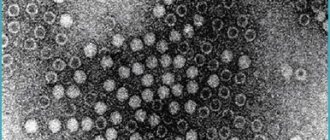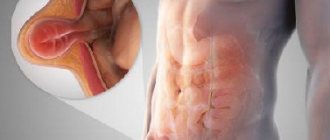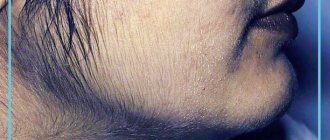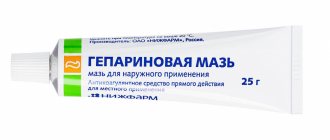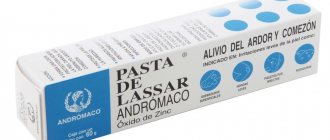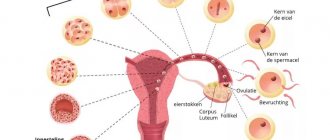From this article you will learn:
- what does a boil look like: photo,
- symptoms and causes,
- how to treat a boil and when you need to urgently consult a doctor.
A boil is a skin abscess caused by infection of one of the hair follicles located deep in the skin.
After a few days, inflammation first develops - necrosis of the hair follicle and partially surrounding tissues occurs, and gradually a cavity filled with pus (i.e., an abscess) forms in this place. Boil is a common name (synonyms are chiry, chiri). In medicine, this pathology is usually called a boil, and this is the only correct name for this pathology. It most often occurs in young people 12-40 years old. Most often they occur on the face (in 65% of cases), but they can also occur on the neck, chest, scalp, groin, back, buttocks...
Factors of occurrence
The causative agent of the infection is usually a pyogenic bacterium - Staphylococcus aureus. This bacterium is present on the skin of any healthy person, and causes infection only if it reaches the deep layer of the skin (for example, through microtrauma). The development of boils is also promoted by:
- dirty skin;
- increased sweating;
- overweight;
- poor nutrition;
- hot humid climate;
- hormonal imbalances in the body;
- poor metabolism.
People with diabetes mellitus, skin diseases, and those prone to stress and depression are often at risk of developing furunculosis because they have a weakened immune system.
Let's talk in more detail about what contributes to the occurrence of this disease?
We have already mentioned that the immediate cause of a boil is an infection, namely staphylococcal.
We can also include damage to the skin - abrasions, cuts, scratches, scratches, abrasions - which contribute to the penetration of infection. We will also include lack of personal hygiene here.
Decreased immune status of the body due to hypothermia, or associated with vitamin deficiency, stress, diets, chronic diseases (diabetes mellitus, obesity, gastrointestinal diseases), taking certain medications, hormonal disorders.
Stages of development
At the very beginning of development, a boil can easily be confused with an ordinary pimple. However, within 3-4 days the inflammation grows, covering the surrounding tissues. Upon palpation, you can feel the tension and density of these tissues.
After a few more days, a sac with a purulent formation forms in the center of the boil, a necrotic core appears and the tissue softens.
Over time, the boil, unable to withstand a large amount of pus, opens and the pus, rejecting the necrotic core, flows out. After which the swelling gradually subsides and redness passes, and a small scar forms in the center of the former boil.
The most dangerous boils are those that arise near the lips, ears and nose. You should not try to squeeze out boils yourself, even if they have arisen in other locations. This can lead to the spread of infection, which will entail serious complications leading to the development of regional lymphadenitis, lymphangitis, and thrombophlebitis.
Symptoms of the formation of a boil (boil)
There is a slight itching and tingling sensation. On the 1st-2nd day, discharge appears. They protrude in a cone shape over the skin, which becomes red and painful when touched. At the top there is a small accumulation of pus with a black dot in the center.
The abscess usually breaks through and dries out, and on days 3-7, it is excreted with pus in the form of a rod along with the remaining hair. The resulting wound is cleaned, filled with granulation tissue and heals. The swelling around it gradually decreases, the pain disappears. A small, whitish, somewhat retracted scar remains at the site of inflammation.
Multiple lesions with boils that appear simultaneously or sequentially one after another in different parts of the body are called furunculosis. When it lasts with small remissions for several years, it is chronic, recurrent.
In places devoid of hair (palms and palmar surface of fingers, soles) boils do not develop. Most often observed on areas of the skin exposed to contamination (forearms, back of the hand) and friction (back of the neck, lower back, gluteal region, thighs). Typically, a boil does not cause significant health problems. The pain is moderate, but when localized, for example, in the external auditory canal or in the nose, it is significant. In the facial area (lips, forehead), as well as on the scrotum, boils are accompanied by significant swelling of the surrounding tissues, which is explained by the looseness of the subcutaneous tissue.
Treatment at home
If the immune system is functioning well, the boil will heal itself in 7-8 days. But to make the process go faster, you can treat boils at home:
- at the initial stage of development, it is necessary to lubricate the abscess with a solution of fucorcin or brilliant green;
- at the stage of compaction and swelling of the connective tissue, it is good to sunbathe in the sun;
- To make the boil empty faster, you need to apply ichthyol ointment;
- It is better to treat an opened abscess with hydrogen peroxide, and also apply bandages with sodium chloride or honey;
- When the boil begins to heal, it is recommended to apply bandages using Vishnevsky ointment.
To prevent the development of purulent formations, you need to shower daily. Do not scratch the itchy area on the skin. Among other things, it is recommended to wear clothes made from natural fabric.
Diagnostics
The diagnosis of “boil” is usually established on the basis of characteristic clinical changes. However, in order to monitor the patient’s general condition, early detection and prevention of complications, the following laboratory and instrumental diagnostic methods can be used:
- General blood and urine tests (CBC, UAM).
- Biochemical blood test with determination of glucose levels.
- Blood test for HIV using enzyme-linked immunosorbent assay (ELISA).
- Determination of hepatitis B and C virus markers by ELISA.
- Bacterial culture of a sample of purulent masses to identify the pathogen and its sensitivity to main antibiotics.
For recurrent and multiple boils, fluorography or radiography of the chest organs, ultrasound examination of the abdominal organs and kidneys, etc. can be additionally performed.
Differential diagnosis of a boil is carried out with other dermatological and infectious diseases, which may be accompanied by similar symptoms, including:
- Hidradenitis suppurativa,
- Erythema nodosum,
- Anthrax,
- Lupus,
- Actinomycosis.
When to contact a surgeon
Boils can be treated at home only for those who are not at risk (do not suffer from chronic diseases), and boils are small in size (up to 5 mm). You should not self-medicate in the following cases:
- if the appearance of a formation is accompanied by intense pain and fever;
- if the abscess has not opened within 2 weeks;
- if furunculosis has developed;
- if the abscess occurs in a small child;
- if the boil is near the nose, lips, in the ear canal;
- there was a relapse of the disease.
How to treat boils -
It is possible to cure boils at home, but only in the cases listed below. In most cases, you should immediately consult a doctor (surgeon), especially if you have concomitant chronic diseases from the list below.
- You can treat it at home - if the size of the boil is no more than 5 mm and you do not have symptoms of intoxication or fever. You must also not have any of the diseases listed below. → if you have diseases: diabetes, oncology, reduced immunity, endocarditis or rheumatoid arthritis, obesity, taking prednisolone (in all these cases you need not only to be treated by a doctor, but also to use antibiotic therapy).
- You definitely need to see a doctor – → if the boil occurs in an infant, young child, → there are symptoms of intoxication, fever, → if a boil occurs on the upper lip, nose, nasolabial folds,
→ if there are symptoms of inflammation spreading: for example, the area of skin redness has increased or red stripes have appeared next to the boil, or another boil is forming nearby.→ if you have diseases from the list above.
Antibiotic treatment
In cases where the boil is large or located in sensitive areas, and its development is accompanied by intoxication, chills and severe inflammation, the surgeon prescribes antibiotics.
For a large boil and a slight increase in temperature, a weekly course is prescribed: the doctor prescribes clindamycin or doxycycline.
At high temperatures and severe inflammation, a two-week course of treatment is most often prescribed, which includes stronger antibiotic drugs: rifadin, rimactan or other analogues.
Don’t forget, Staphylococcus aureus easily adapts to a variety of antibacterial agents, and as soon as the body’s defenses are slightly reduced, they multiply and form new abscesses. Therefore, people with reduced immunity should immediately consult a doctor and not self-prescribe medications. Keep in mind that if you relapse, they will no longer help you!
This article is for informational purposes only, please consult your doctor for details!
How to make a diagnosis?
This disease occurs in three stages:
The 1st stage - infiltration - manifests itself in the form of redness, swelling, thickening of the tissues surrounding the hair follicle, which increase with each subsequent day. This process is most pronounced when the boil is localized in the facial area. The duration of this stage is up to 3 days.
Stage 2 – suppuration and necrosis, characterized by the appearance of a purulent core on days 3-4. Often the general condition of a person can be disturbed - pain intensifies, temperature rises, general weakness appears, headache bothers. If the outcome is favorable, after 2-3 days the purulent core is rejected, pus comes out, and a deep, moderately bleeding wound is formed.
The 3rd stage - healing - is manifested by the subsidence of all the above processes and the formation of a scar in this place ends.
We have analyzed the classic picture of the course of the disease. Symptoms largely depend on the location of the boil and on the individual characteristics of each person’s body.
Sometimes the picture may be erased, the formation of the rod does not occur. In case of complications, an abscess or soft tissue phlegmon is formed.
Complications, depending on location, are divided into:
- local (carbuncle, abscess, phlegmon),
- distant (lymphangitis, lymphadenitis, phlebitis),
- general (furunculosis, sepsis)
The correct treatment for most boils is surgery.
Self-medication with ichthyol, Vishnevsky ointment, compresses can provoke uncontrolled spread and generalization of the purulent process, therefore only a doctor determines the treatment tactics for a boil. If the abscess is not properly opened and drained, antibiotics, anti-inflammatory and other drugs cannot effectively act on the tissue affected by pus.
Opening and draining the boil
If the purulent process extends beyond the hair follicle, mandatory surgical intervention is required. It is performed using classical techniques or using a laser. Laser removal of a boil is accompanied by additional disinfection of the affected tissues of the boil. The most optimal intervention technique in each specific clinical case is determined by the doctor.
The surgeon also determines the time for opening in such a way that the rod is fully formed - otherwise a relapse of the disease is possible. The procedure is performed under local anesthesia. After opening, pus and necrosis are removed. Drainage is removed according to indications. The tissues are treated with an antiseptic. An antibiotic ointment and a sterile dressing are applied to the wound.
Why are boils dangerous?
When boils are treated incorrectly, self-medication, attempts to squeeze out an abscess, or when it is injured (for example, by shaving), complications often develop. These include:
- phlegmon and soft tissue abscesses - extensive purulent lesions;
- thrombosis – blockage – of lymphatic and venous tracts;
- septic phlebitis, lymphangitis and lymphadenitis - inflammation of blood and lymphatic vessels, lymph nodes.
The entry of the pathogen into internal organs and the circulatory system sometimes results in a life-threatening condition - sepsis. When self-medicating boils on the face, the infection can enter the brain and cause meningitis.
Sources
- Shallcross, Laura J et al. “Incidence and recurrence of boils and abscesses within the first year: a cohort study in UK primary care.” The British journal of general practice: the journal of the Royal College of General Practitioners vol. 65.639 (2015).
- Clinical protocol for diagnosis and treatment of “skin abscess, boil and carbuncle of other localizations” Expert Council of the Republican State Enterprise at the Republican Center for Healthcare Development of the Ministry of Health and Social Development of the Republic of Kazakhstan dated December 12, 2014 protocol No. 9.
- Boils and carbuncles. Mayo Clinic.
- Federal clinical guidelines for the management of patients with pyoderma. Russian Society of Dermatovenereologists and Cosmetologists, 2015.
Prognosis and prevention
As a rule, recovery occurs 1-2 weeks after the first symptoms appear. Sometimes a small connective tissue scar appears as a residual phenomenon, which gradually acquires a flesh color and becomes hardly noticeable.
It is not always possible to prevent the development of boils, especially when the immune system is weakened. However, the following recommendations can help avoid the development of the disease:
- Maintain good personal hygiene, including regular hand washing with soap and water or using alcohol-based hand rubs. This will reduce the likelihood of disruption of the normal microflora of the skin and infection by pathogenic bacteria.
- Proper treatment of skin damage. The skin around cuts and abrasions should be treated with antiseptics, and the injuries themselves should be bandaged with clean, sterile, dry bandages until they heal.
- Individual use of personal hygiene products. No sharing of towels, sheets, razors, clothing, sports equipment or other personal items is permitted. Due to these items, pathogenic staphylococci are able to be transmitted from person to person.
- Proper, balanced nutrition.
- Complete treatment of concomitant diseases and conditions that can reduce the body's defenses.
